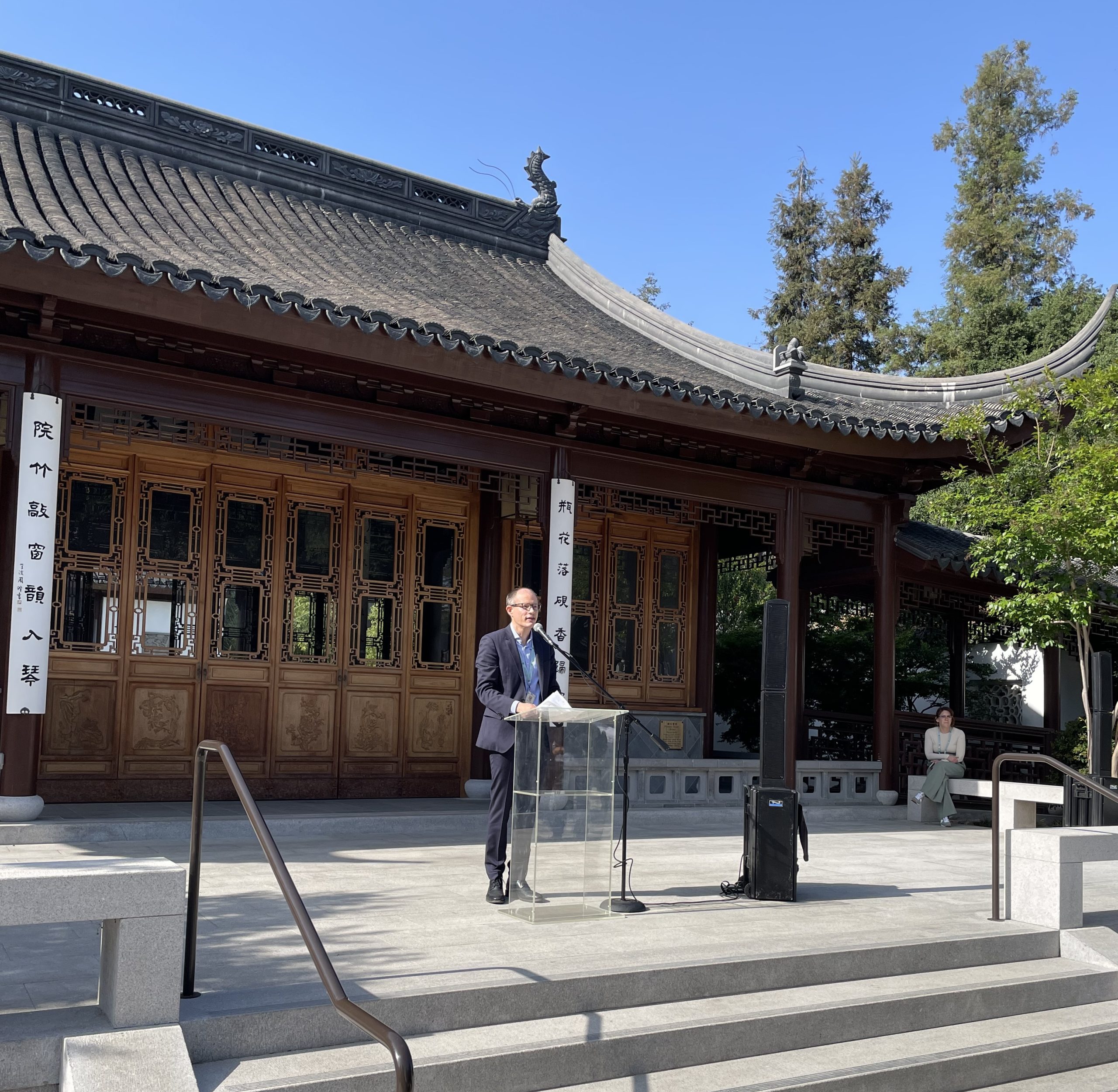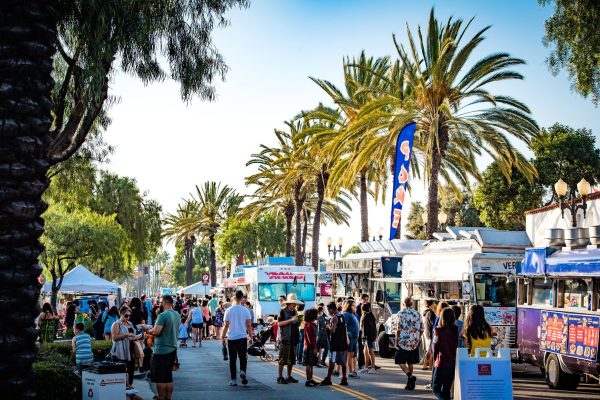The final piece of the Huntington’s popular Chinese Garden — the culmination of years of work, interrupted by the pandemic — the Chinese Medicinal Garden (採藥圃 Cǎi Yào Pǔ) is, as the Chinese Garden’s curator Philip Bloom says, truly a milestone worth celebrating.
The team has been working on many types of interpretive programming for the Chinese Garden, including an art gallery scholar studio and the celebration court for performance space.
“But it is, I think, the Chinese Medicinal Garden that most powerfully connects the Chinese Garden to the rest of the Huntington as a whole,” Bloom reflected in his remarks to the press the day before the garden’s official May 22 opening.
“The Cǎi Yào Pǔ is a place for learning about the relationships between plants and people,” Bloom said. “Indeed, in historical China, medicinal gardens were always a primary site where people went to learn about and think with plants.”
Michelle Bailey, the garden’s assistant curator, concurred: “The deepest purpose for us at The Huntington is to show the long relationship between humans and plants.”
The plants featured in the garden were chosen partially based on those included in seminal medical texts of Chinese traditional medicine, such as “Shennong’s Classic of Medicine” (神農本草經 Shénnóng Běncǎo Jīng) — one of the world’s oldest pharmaceutical texts, written in the first or second century C.E. The garden’s collection includes selections shared by the Chinese Medicinal Herb Farm in Petaluma, California. Additionally, some included specimens were hand-collected from China in the 1990s by Robert Newman, dean emeritus of Emperor’s College, which further impresses botanical and historical significance.
In total, around 100-120 of these plants have been selected and included in the medicinal garden. As both Bailey and Bloom are historians by background, the two chose to structure the garden’s six main beds based on the stories they saw within the plants’ characteristics and uses, rather than following the more typical approach of simply grouping plants based on how well they grow together.
The six main beds are broken down into the following categories: fundamental herbs, prescriptions/plant classifications, ornamentals, comestibles, imported medicines and useful plants.
The Fundamental Herbs bed showcases many plants and herbs from “Shennong’s Classic,” many of which are still used today in traditional Chinese medicine. Due to the sheer quantity of plants covered across in the text, plants’ inclusion were dictated by availability.
To delve into the story of trade, the Imported Herbs bed features plants non-native to China but would have reached them through the Silk Road or by maritime trade. Some plants nested in this bed may be familiar, like turmeric, ashwagandha and St. Paul’s Wort, among others. These tell the story of communication, travel and exchange — making their way from their native lands of India, Southeast Asia, Europe and even the Americas to be used, studied and cataloged in another seminal medical text, “Compendium of Materia Medica” (本草綱目 Běn Cǎo Gāng Mù) also known as “Great Pharmacopeia,” which was originally published in Nanjing, China, in 1596.
The “Useful Plants” are multipurpose ones: those that can be used not only as medicine or treatment, but also as dyes, textiles, incense, timber and other purposes. “Comestibles” are foods that also have beneficial medicinal properties, like sacred basil and aloe.
One bed is split in half: on one side, all 11 herbs and grasses needed for a prescription for long life are grouped together, while the other half of the bed is dedicated to herbs classified by their taste — bitter, sweet, salty, sour and acrid.
The “Ornamentals” may strike visitors as familiar flowers and trees for a Chinese garden, such as plum and peach trees, chrysanthemums, peonies and roses — evidence that cultivating a garden can be healthful and beneficial in more ways than one.
Beyond the verdure currently exhibited in the garden, there are still more rare specimens being tended in the Huntington’s nursery. While nothing is planned yet, there is the potential to further explore the knowledge and history of medicinal herbs in an extension of the Cǎi Yào Pǔ.
Aside from independent strolls through the Chinese Medicinal Garden, members of the public can also attend monthly open houses, at which Bailey’s dedicated and knowledgeable team of about 10 volunteers will be available to answer questions regarding the plants, their history and their uses. Prospective attendees can check the dates and times for these open houses at the garden’s webpage to plan visits here: https://huntington.org/event/chinese-medicinal-garden-open-house
May S. Ruiz contributed to this story.







